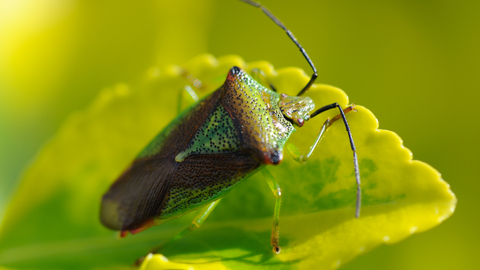
Hawthorn Shield Bug ©Amy Lewis
Hawthorn shieldbug
Scientific name: Acanthosoma haemorrhoidale
Our largest shieldbug, the red-and-green hawthorn shieldbug can be seen in gardens, parks and woodlands, feeding on hawthorn, rowan and whitebeam. The adults hibernate over winter.
